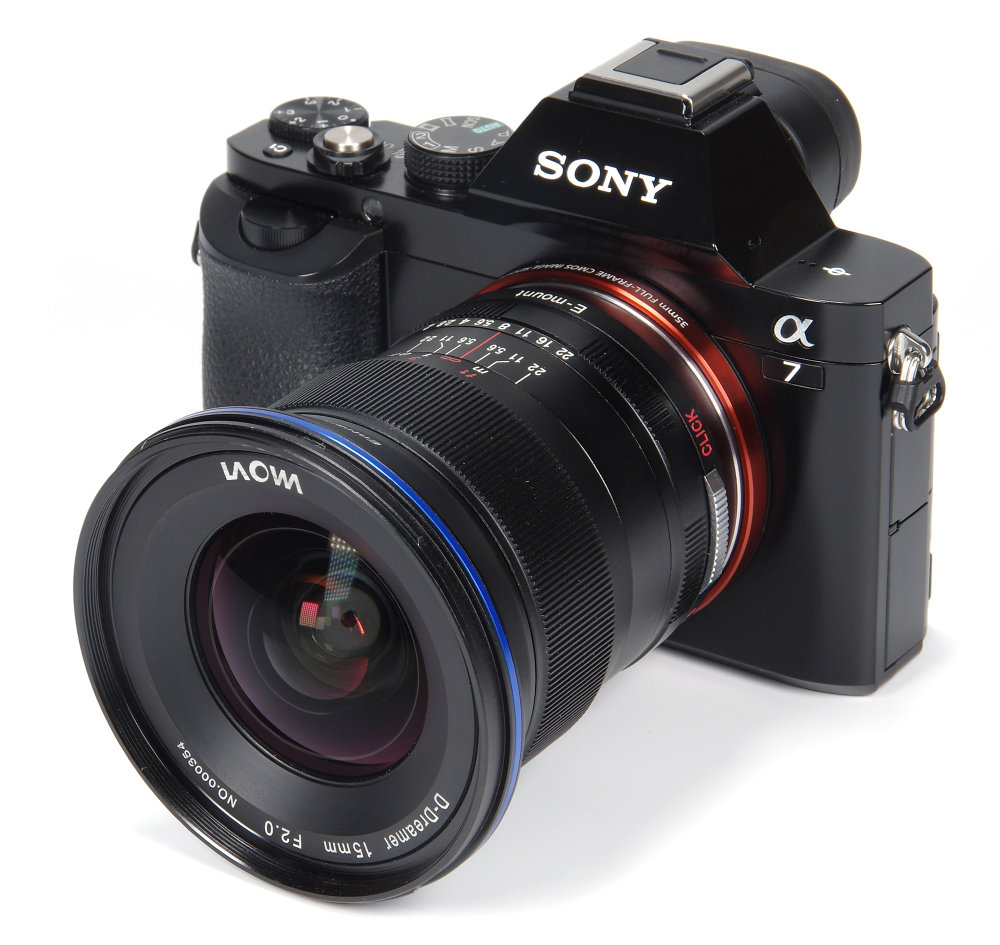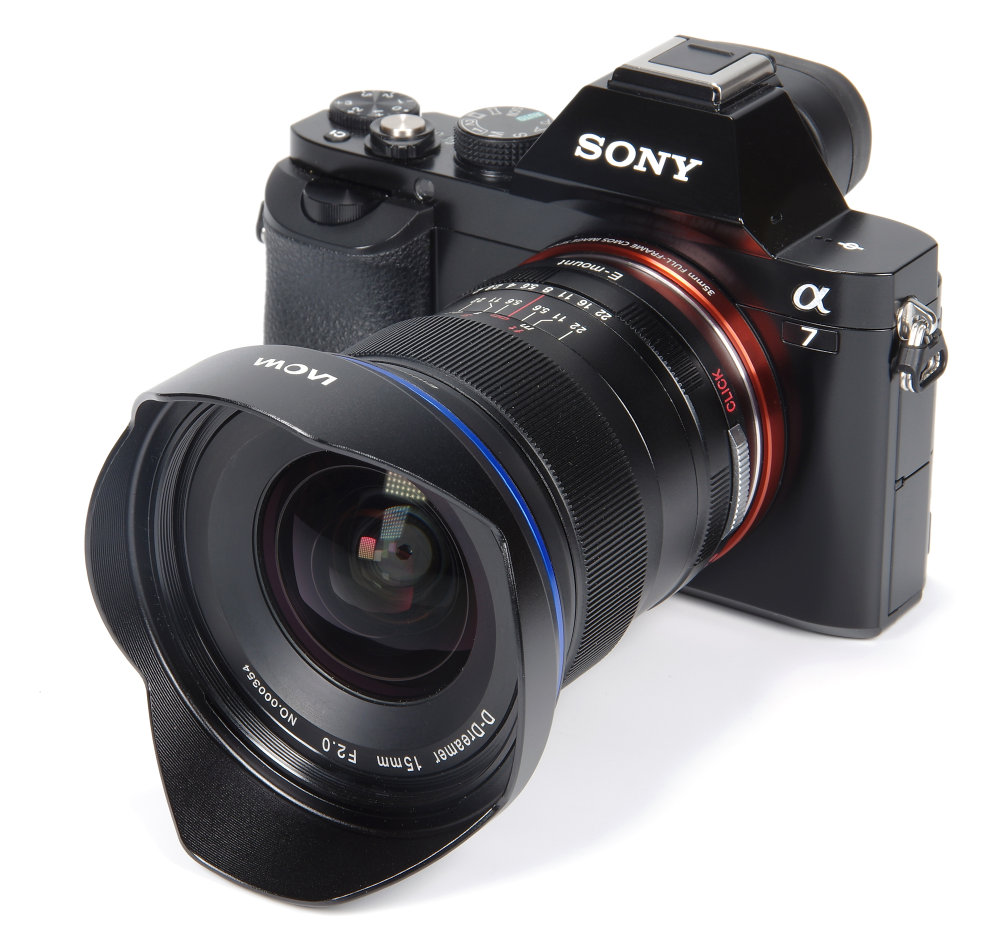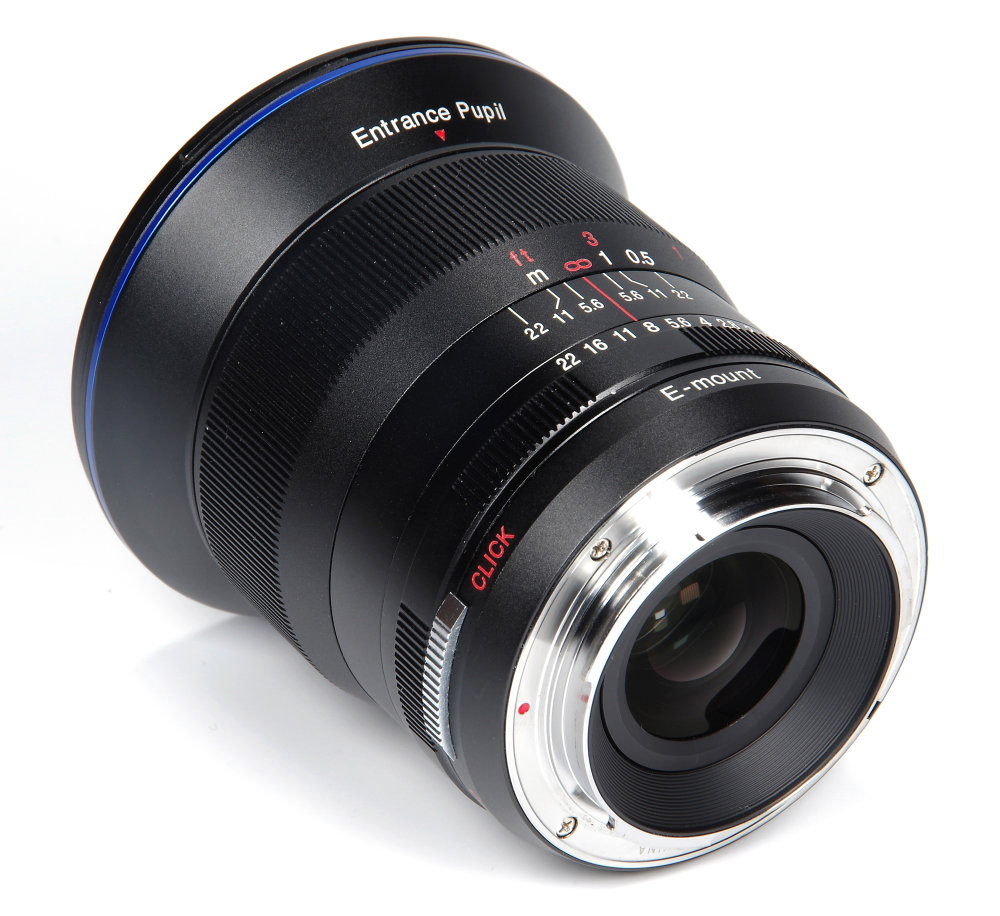Laowa 15mm f/2 FE Zero-D Review
Laowa 15mm f/2 ZERO-D FE Handling and Features
The front element is relatively small, certainly compared with the traditional 15mm f/3.5 lenses for manual focus SLRs, first introduced in the early 1970s. This means that standard 72mm filters can be used, although slim ones would seem a suitable precaution against vignetting. Laowa use a special “Frog Eye Coating” to repel dirt, grease and water from the front glass of the lens. Surrounding the filter thread is a bayonet fitting for the provided petal shaped lenshood. The lenshood is well made and slips easily and smoothly into the bayonet, but unfortunately has no click stop to hold it in place. This means it can rotate out of position and cause vignetting and needs to be watched. The alternative would be to use a small piece of tape to hold it in place, but we should not need to do this on any new lens.
Immediately behind the hood bayonet is a red dot that locates the Entrance Pupil position. This is the point around which the lens should be rotated to make wide panoramas. Next up is the wide manual focus ring, and indeed the lens is manual focus only. With such a large amount of depth of field finding a focus position unaided is quite difficult, so employing the various electronic aids available is necessary. On the Alpha 7 used for this review this works very very well, making focusing very easy indeed. The ring itself is well ribbed and affords a good grip. It is also quite smooth in operation, not perhaps in the top league but certainly very usable. Focusing is down to 15cm, giving a useful magnification of 1:4 or 0.25x. A very clear depth of field scale is also provided, a welcome feature with a lens where the hyperfocal distance can be well employed to maximise the areas in focus.
The aperture ring has click stops at full values, plus a switch so these can be decoupled, giving a smooth silent operation for video work. Finally, the metal mount is solidly made and the lens couples to the body accurately. There is a small amount of rotational movement after the lens is locked home, but this does not alter the focusing distance so has no bearing on the final image quality. Overall, the 500g optic has the feel of being a solidly made lens, not up to the finish of the more expensive marques, but reliably functional. The 5 year guarantee helps to reassure that the lens will continue to operate well for many years.
Optical construction comprises 12 elements in 9 groups, including 3 ED (Extra Low Dispersion) and 2 Aspherical components. The diaphragm consists of 7 blades.
15mm lenses are very wide and they do need some care in use, but as time has gone by our eyes have become much more used to the extremes of focal length. The boundaries of what is seen as normal have broadened, just as the cost of some more exotic lenses has become more affordable. This 15mm has many potential advantages, the low distortion, close focusing and very bright aperture opening up many possibilities. It then all hinges on how it performs.
Add your message
Please login here or if you've not registered, you can register here. Registering is safe, quick and free.
photodo Stats
428 MTF tests
74 in-depth photodo reviews
100+ users join each day
Help the lens community by reviewing or rating a lens today via our lens search
Latest Lens Reviews
- Chinon 28mm f/2.8 Vintage Lens Review
- Canon EF 70-200mm f/4L IS II USM Lens Review
- Samyang AF 85mm f/1.4 EF Review
- Sigma 70mm f/2.8 DG Macro Art Review
- Samyang AF 24mm f/2.8 FE Review
- Meike 50mm f/1.7 Review
- Tamron 70-210mm f/4 Di VC USD Review
- Lensbaby Burnside 35mm f/2.8 Review
- Asahi Super Takumar 50mm f/1.4 Review
- Asahi Super-Multi-Coated Takumar 135mm f/3.5 Review



